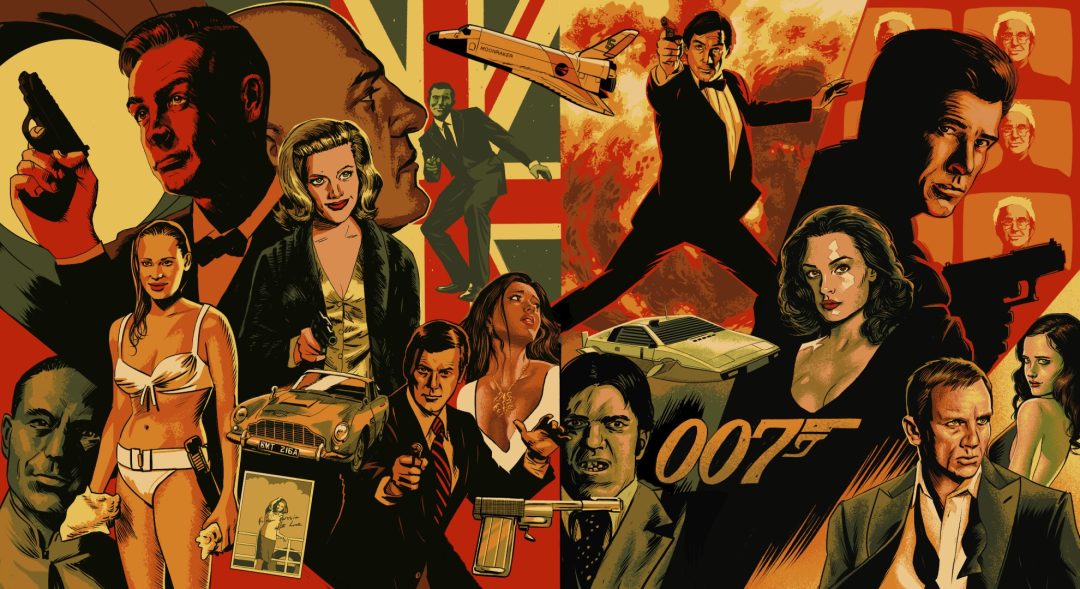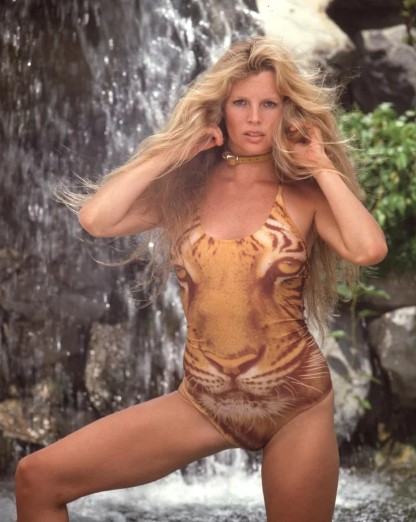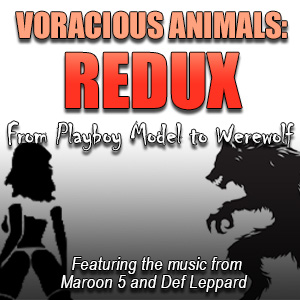This era of James Bond had hit his stride, despite Moore not even having a contract. Cubby proved he could marshall Bond alone, and a settled creative team was in place. Nothing could possibly go wrong now… or could it? The day they had long feared was suddenly upon them. McClory was back, and this time, he had brought a friend. The stage was set for the Battle Of The Bonds.
Octopussy and Never Say Never Again fight it out!
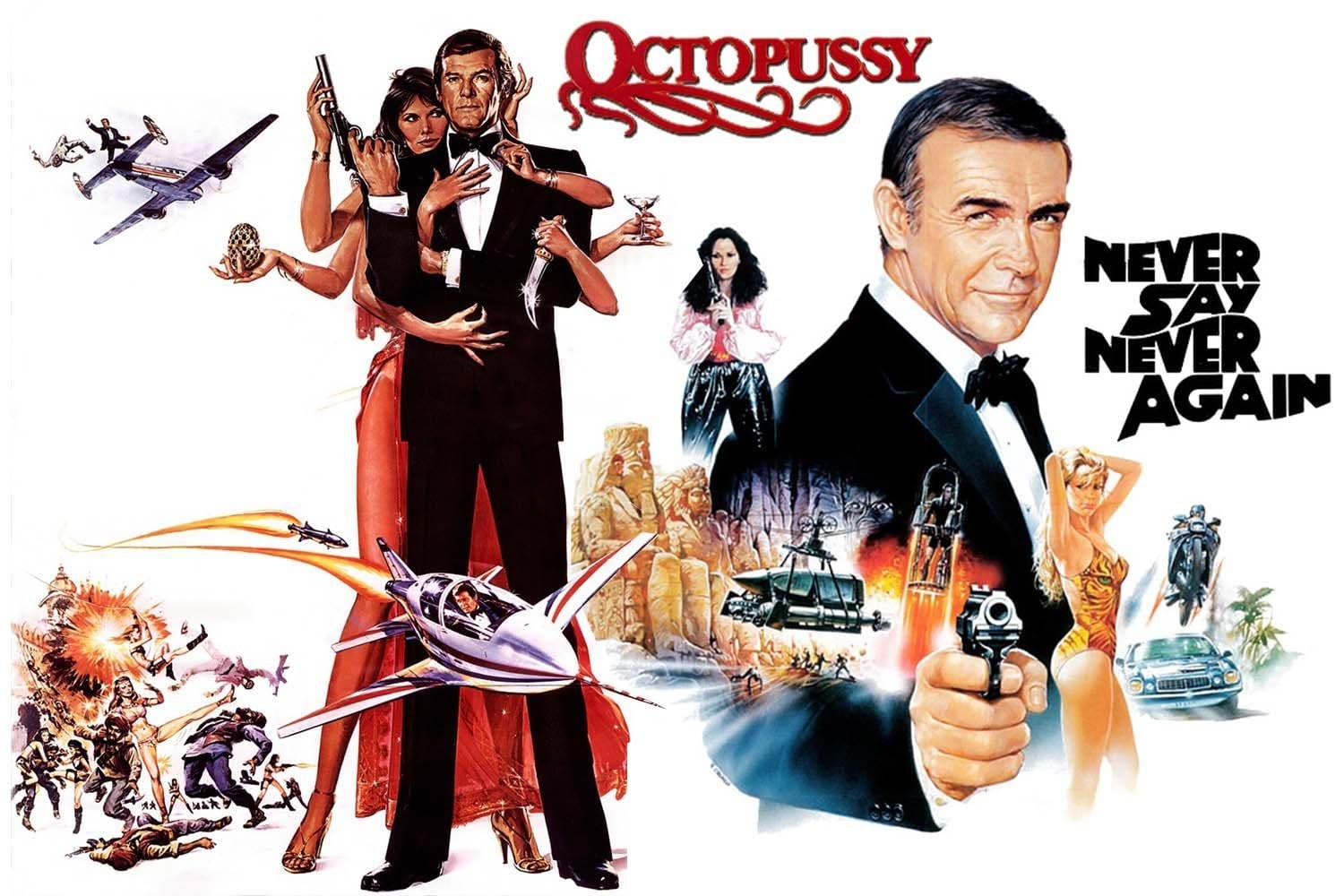
Octopussy & Never Say Never Again – Behind The Scenes
Change was in the air Eon Productions. After negotiating a picture-by-picture deal since The Spy Who Loved Me, Roger Moore was very much considering that his time as 007 was over. The decision was made early on that Octopussy would be the next title, and that they would set the story in India, which was director John Glen’s idea. Other than that, the movie was a blank page.
Cubby turned to novelist George MacDonald Fraser. Through his character of Flashman, Fraser was very familiar with India, its culture, and its history. Fraser would later write Red Sonja, so you know he’s legit. Fraser created the first draft of the story. Richard Maibaum and Michael G. Wilson then worked to turn the story into a script they could shoot.
Meanwhile, Cubby Broccoli started his search for a new James Bond. The usual suspects of Timothy Dalton, Lewis Collins, and Michael Billington were again in the frame. A new contender was also in the running – James Brolin. Brolin did the by-now obligatory screen test, recreating the bedroom scene in From Russia With Love. He blew everyone away and was locked in as the new 007.
Production designer Peter Lamont continued his location scouting, traveling back and forth to India. On one of the flights home, he became part of a Bond-worthy incident. The plane he was on got hijacked. Lamont spent more than 12 hours as a hostage, and the standoff ended with the death of a hijacker.
Louis Jordan had been in the running for the role of Drax in Moonraker, which put him on the radar for Octopussy. He had the required urbane style to play an exiled Afghan prince, and his close friendship with the Broccoli family ensured the he was auditioned. His line delivery, especially of the word “Octopussy”, convinced everyone he was the right choice. Kabir Bedi was then brought in as Khan’s henchman. Bedi was an Indian actor, with a big domestic fanbase and also was popular in Italy as a heartthrob.
Steven Berkoff came onto the film because Barbara Broccoli saw him in his own play – Greek – in Los Angeles. Berkoff showed up for his audition in a full samurai suit. One would be prone to questioning this decision, but once they see Berkoff act, most questions are rendered moot. Berkoff has a flamboyance to his style where one wonders how he fits his lines past the amount of scenery he is chewing.
Everything was coming together for Octopussy, but was it about to be the unlucky thirteenth movie in the Bond franchise? There was a cloud on the horizon…
Meanwhile…
The origin of Never Say Never Again goes back to the 1950s. Kevin McClory and Jack Whittingham collaborated with Ian Fleming on a screenplay for a Bond film called Longitude 78 West. The screenplay was abandoned, but Fleming used elements of it in his novel Thunderball. This set off massive legal issues that would plague the world of 007 for generations.
McClory took Fleming to court, and as a result, McClory was awarded certain rights over the story and elements of the plot. He then worked with Broccoli and Saltzman to get Thunderball made.

Flash forward twenty years. Rocky Balboa’s wife, Talia Shire, had a husband/producer/entertainment attorney named Jack Schwartzman. Schwartzman learned enough time had passed to do a remake Thunderball, as per McClory’s retained rights as a result of the original court case. Schwarztman saw great potential to go outside the system and make a Bond movie and to establish himself as an independent producer of major projects.
Schwartzman swung for the fences. He went to Sean Connery. Connery had already worked on a potential rival Bond project. In the 1970s he was advising both McClory and writer Len Deighton about the character as they spun up an earlier attempted remake of Thunderball, under the working title Warhead. That project had been brought to a screeching halt by a lawsuit from Eon Productions, which ended in a ruling confirming that McClory owned the sole rights to SPECTRE and Blofeld.
Schwartzman had done his research. He explained to Connery what rights were available, what they could do and, perhaps most importantly, what they could pay him. Connery was ever the Scotsman, and the number was higher than any studio number. His interest was piqued.
Lorenzo Semple Jr. of the Batman TV show and King Kong (1976) drafted up a screenplay while Schwartzman continued to think big, He went to the director of The Empire Strikes Back, Irvin Kershner, to get him on board.
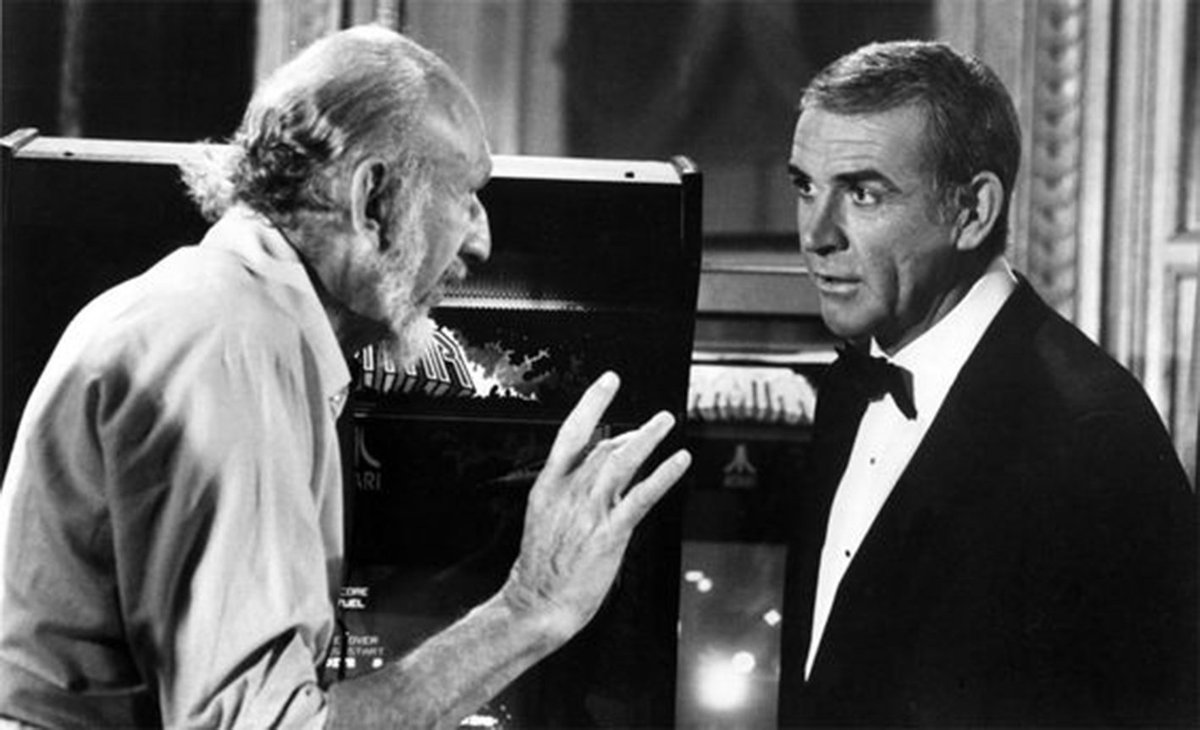
Semple Jr. had the idea to use an older Bond. He wanted to mine the character development opportunities in the idea of a burned-out secret agent getting rehabbed and brought back into the game. Kershner wasn’t sure about this. His position was that Bond fans were younger and wanted to see “young-person stuff”.
Semple Jr. took his massive budget, action-packed treatment to Connery. Connery liked what he saw and signed on. Connery had been previously asked, many years ago, if he would ever play James Bond again. His simple response was “Never again.” Reminding him of this vow, Connery’s wife, Micheline, suggested the title Never Say Never Again.
Semple continued to work on the script, and much like his work on King Kong, Semple took a more corporate approach to villainy, choosing to make the villain a contemporary businessman corrupted by his love for power. As the project progressed, the purse strings tightened. Another rewrite was requested to further scale back the story to save money on production. This resulted in action scenes being stripped back.
All of this was done without Connery’s approval. When Connery saw what was done to the story, he grew angry and backed out of the project. Semple Jr. then became the sacrificial lamb and was removed from the project to tempt Connery to recommit. The producers turned to Tom Mankiewicz, by now a veteran Bond writer. He declined to participate out of loyalty to Cubby Broccoli and Eon.
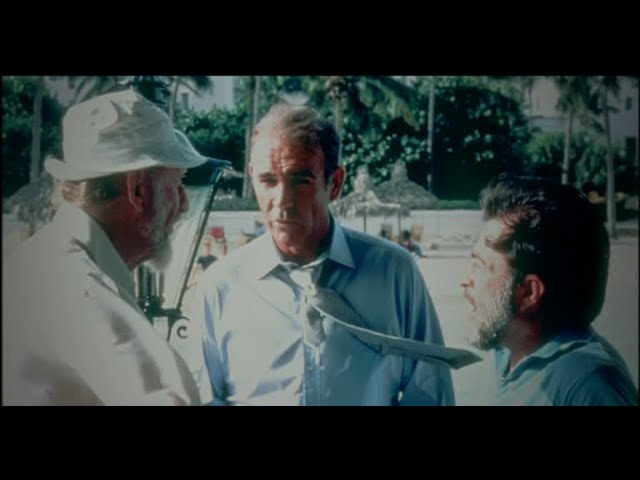
Kirshner assessed the script himself and decided story and dialogue were the two main problems. He didn’t fully understand the plot, and felt humor was missing. Dick Clement and Ian Frenais were then brought in to do a rewrite. They did a fairly major overhaul. The first 40 pages are entirely their work, except for some of the action scenes. It was also Clemet and Frenais who brought in the character that would go on to be played by Rowan Atkinson.
Keeping the project moving was a challenge. Clement said writing the script was difficult due to various factions and tensions within the production. There was also the continual threat of litigation from Eon. Everything they wrote had to be put through a vetting process of four parties, including lawyers and an insurance company, to make sure they weren’t going outside the available rights.
Back across the Pond…
Simultaneously, Cubby Brocolli, John Glen and the Eon team were all set and ready to go. Their new 007, James Brolin, had already secured a rented apartment in London. His stuff was packed back in Los Angeles and he was days away from getting a flight.
Then Cubby received word of how far advanced things were with Never Say Never Again and that his nemesis, Sean Connery, was returning to the role. Not only that, Schwartzman and company were planning to have their movie out in the same year as Octopussy.
The race was on, and the stakes were high. Cubby spent many sleepless nights thinking about what to do. In the end, he made a harsh decision. This was no time to introduce a new 007 to the world — not with Connery in a rival production. Cubby spoke to Roger Moore, who he always had a good relationship with. Moore, who was always happy to renegotiate a Bond fee for a one-off deal, agreed to return.
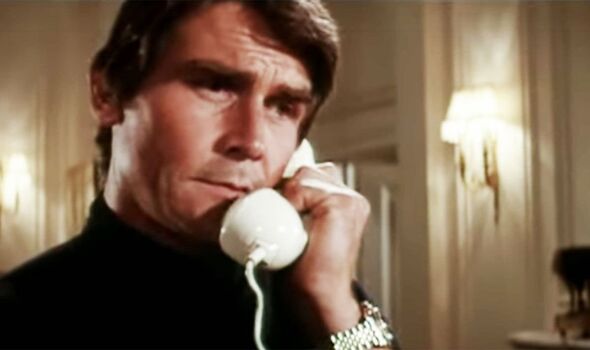
The unfortunate phone call was made to Brolin. He was out as Bond, and Moore was back for the sixth time. Now they had their Bond, their villains and their story. They still had some roles to fill, however.
They originally wanted a South Asian actress to play Octopussy. Only two Indian actresses of note were working in a predominantly white Hollywood at the time: Persis Khambatta and Susie Coelho. The search was widened. Barbara Parkins and Kathleen Turner were auditioned, but didn’t quite fit the role.
Cubby and crew actually looked at Barbara Carrera, but Never Say Never Again struck another blow by snaring her instead. Carrera turned down Octopussy because she wanted to work with Sean Connery.

Swedish actress and model Maud Adams, who had already appeared as the tragic Andrea Anders in The Man With The Golden Gun, had tested with James Brolin as a stand-in actress. This meant she was already in the minds of Brocolli and Glen. Perhaps as a last resort, they turned back to her.
Having worked alongside another Swedish actress in The Man With The Golden Gun – Britt Ekland – Adams found herself again working with another Swede. Kristina Wayborn was Miss Sweden in 1970 and a semi-finalist in Miss Universe that same year. She was known for her athleticism, injuring a stuntman, and being an arm-wrestling champion. A semi-famous picture of Wayborn with a tiger is what got her noticed by the team casting for Bond.
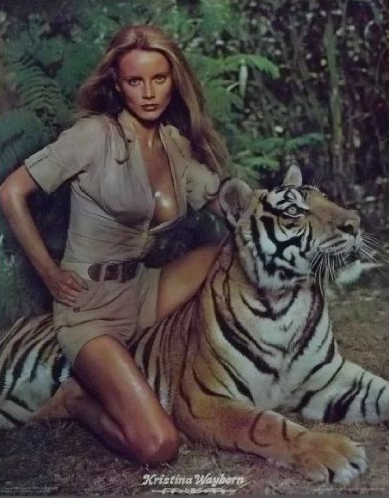
Broccoli was also a huge tennis fan, which led to another minor role being cast. Cubby was in London during the Wimbledon championships. Knowing they were shooting in India, Cubby noticed player Vijay Amritraj. After a brief conversation, Amritraj was whisked across London for a screen test. He famously says he is the only man to be screen-tested for a Bond movie and play at Wimbledon on the same day.
Despite his good fortune, Amritraj ran into a few challenges during filming. He particularly disliked snakes, so he was not thrilled to be working with a cobra in India. He asked the handler if the snake still had its venom. The response was:
“A little, yes, so don’t get bit!”
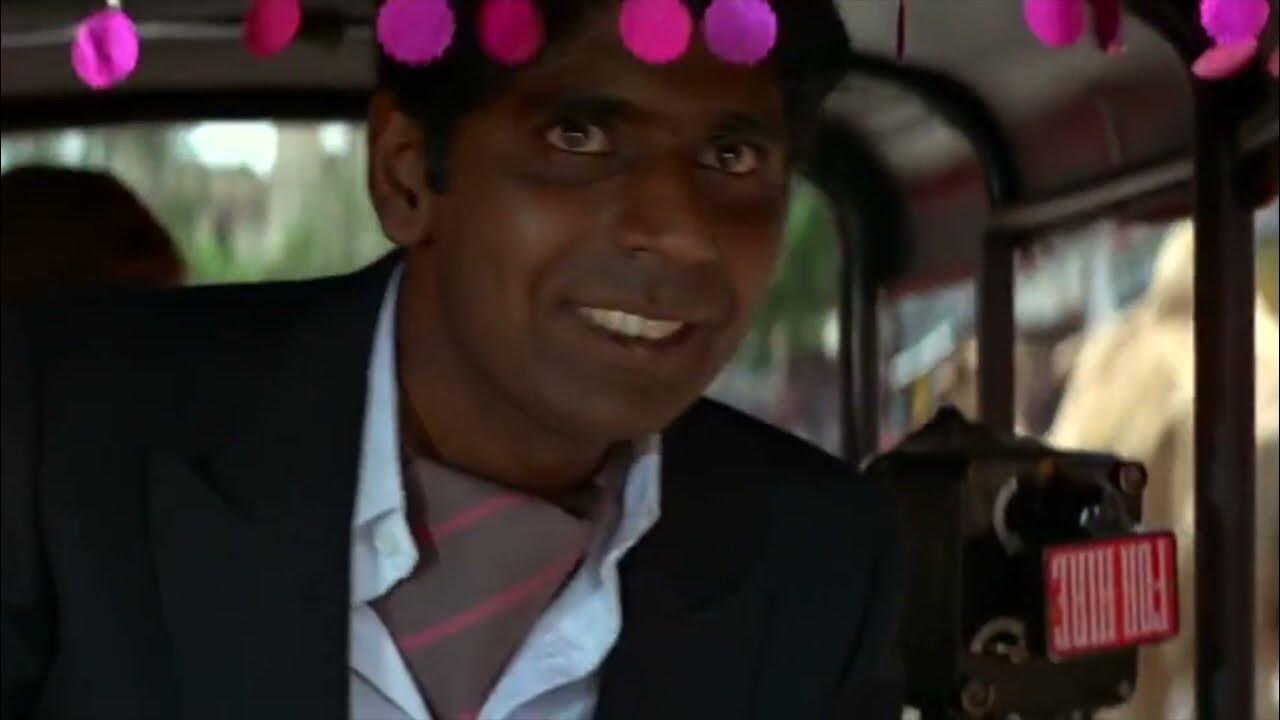
After Bernard Lee’s sad passing, and the character of M being absent from For Your Eyes Only, producers turned to Roger Moore’s old colleague from Ivanhoe, Robert Brown to fill the character’s shoes. Brown had previously played Admiral Hargreaves in The Spy Who Loved Me and many fans consider this the same character, just now promoted to the head of the Secret Service.
Lois Maxwell’s character of Moneypenny was to be replaced by Michaela Clavell as Penelope Smallbone. However, a last-minute change of plan meant they appeared on screen together, after all. Maxwell was initially very annoyed by this development, but then she realized she had once been friends with Clavell’s mother and warmed up to the actress.
Never Again
Cubby ran his company like a family when on set. As a result, Octopussy shaped up to be another happy production. On the rival Bond film, Never Say Never Again, things were not quite as good. The constant pressure to not fall foul of the legal restrictions was taking its toll. Schwartzman knew any coloring outside the lines regarding the rights would bring swift legal retribution from Eon.
This meant no gun-barrel opening, no 007 logo, and no Bond riff in the music. It was becoming clear just how iconic the Bond motifs were and how integral to the movies they had become. Work around were found, but they didn’t pack the same punch.
After shooting on the French Riviera for two months, the crew moved on to Nassau, in the Bahamas ,and deliberately shot at Clifton Pier, one of the locations used in Thunderball. It was also here that the underwater scenes were filmed.
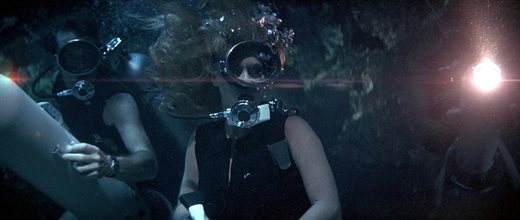
The troubled production led to Connery taking on many of the production duties with assistant director David Tomblin. Director Irvin Kershner became critical of producer Jack Schwartzman, saying that, while he was a good businessman, he didn’t have the experience required to be a film producer. With shooting still underway, the production also ran out of money. Schwartzman had to fund further filming out of his own pocket and admitted he had underestimated the budget.
As pressure mounted, Schwartzman and Connery would barely speak to each other. Connery was unimpressed with what he perceived as a lack of professionalism behind the scenes. He would eventually go on record, referring to Never Say Never Again as a:
“…bloody Mickey Mouse operation!”
Despite this, movie lore was still created. A young Steven Seagal was the martial arts instructor on the Never Say Never Again. He accidentally broke Connery’s wrist while training, but Connery did not realize this until over a decade later.
After overhauling the script completely, Clement and Frenais were also unhappy that in post-production the director put the theme song over the opening sequence. They felt it killed the tone they were going for, and one can image how different the opening would be with a proper action score rather than Loni Hall’s song.
Clement and Frenais also weren’t happy with the ending. Their assessment is that the ending didn’t get the attention it needed. Everyone paid attention to the beginning of the script, but as the problems mounted and people grew tired, the ending got shortchanged.
It is something of a Hollywood miracle that Never Say Never Again even got finished and turned out okay. It was shot over five countries, and Kirshner said no one was in charge but a line producer. Aside from being a beginner, another thing that held Schwartzman back was the legal matters. He spent most of his time in court, so he could not be on hand to assist with filming issues as much as he wanted.
Kershner agrees with this view and admits he had a rough time making the film. The script was still being worked on as they went along. Plus, he grew fatigued in the editing room trying to piece it all together. In the end, he blames the material he had to work with, not the actors.
Kershner says his best memory was working with Connery and credits the lead actor as the force that kept everyone together. Connery’s understanding of the character and his personality kept everything moving. If it wasn’t for Connery, the film probably never would have been started…or finished.
Going Big
Knowing they were up against Connery and crew, Broccoli took his customary approach – nothing was to be left on the table, and every penny was to be onscreen. It was essential to start with a spectacular pre-credits scene. The mini jet was originally to be used in the pre-title for Moonraker. They returned to the idea for Octopussy.
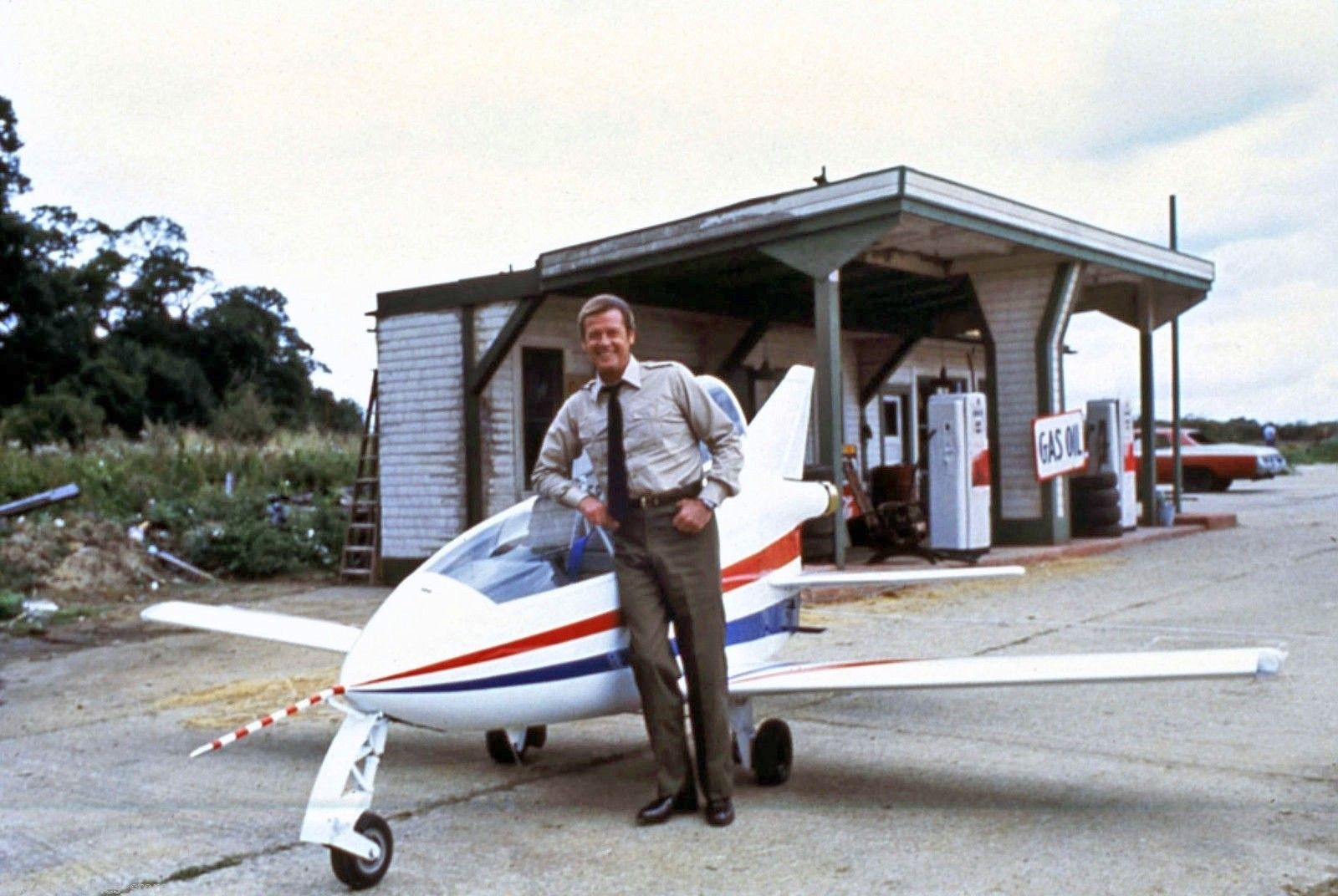
Exceptional foreground miniature work was completed to make the jet appear to fly into a hanger at high speed. For the appearance of flying inside, they mounted a full-sized model of the plane on a column, attached to a Jaguar car. Moore was placed inside, then the car was driven through the hanger at 75 miles per hour. To disguise the pole and the far, a busy foreground was stocked with moving extras and other aircraft equipment.
As the main production moved to India, excitement for Bond to be arriving in their country reached fever pitch. The production simply could not control the crowds, for whom things like barriers and closed areas were merely a suggestion. In the tuk-tuk chase, the cyclist who rides between the vehicles as they fight is simply an Indian guy who ignored the signs and rode his bike down the street. They left it in the finished movie.

The heat also caused problems for Roger Moore. Everyone else was in shorts and t-shirts. Bond is always immaculately tailored, even in tropical climates. As Bond could not be seen sweating, Moore would have to change shirts several times to complete a scene.
As production continued to country hop, the Nene Valley Railway, near Peterborough, UK, stood in as the Eastern European route for Octopussy’s circus train. Despite precautions, it was here that tragedy struck. Long-time Moore stunt-double Martin Grace was hanging off the side of the train filming a sequence when, due to miscommunication, the train entered a section of track that had not been surveyed.
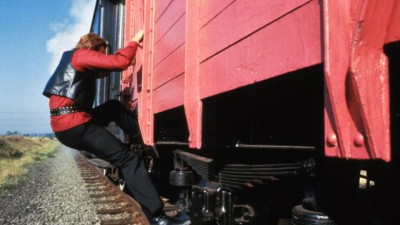
A trackside concrete stanchion clipped Grace at high speed, breaking his rib and arm, while smashing his thigh and ripping open his leg.
Somehow, Grace hung on and avoided falling to his death beneath the wheels of the speeding train. This resulted in a six-month hospital stay. Moore was devastated. Grace had been doubling him for years and they were firm friends. Moore visited him often and eventually Grace made a full recovery.
The incident so affected second unit cameraman Arthur Wooster, who had a camera on Grace when this happened, that he almost quit but was talked out of it.
Yet, the show must go on. For close-up shots of the train fight, two cars were brought to Pinewood studios. For the fight around the coupling, featuring Bond hanging between carriages, they hoisted the carriages up by crane and had a treadmill, painted to look like tracks, running beneath Moore. For the sparking sword strikes, an electric cable was run up Bedi’s sleeve and powered with a battery.

They shot the final scenes for Octopussy in November at Pinewood. On the sound stage it was freezing cold, so it was incredibly uncomfortable for the female performers, dressed in skimpy outfits as Octopussy’s circus army, who suffered between takes.
The trusted Bond aerial team of B.J. Worth and Jake Lombard returned to design and shoot the final sequence, featuring Bond fighting Gobinda on top of Kamal Khan’s airplane. As with Moonraker, they used ultra-thin parachute backs hidden beneath breakaway clothing.
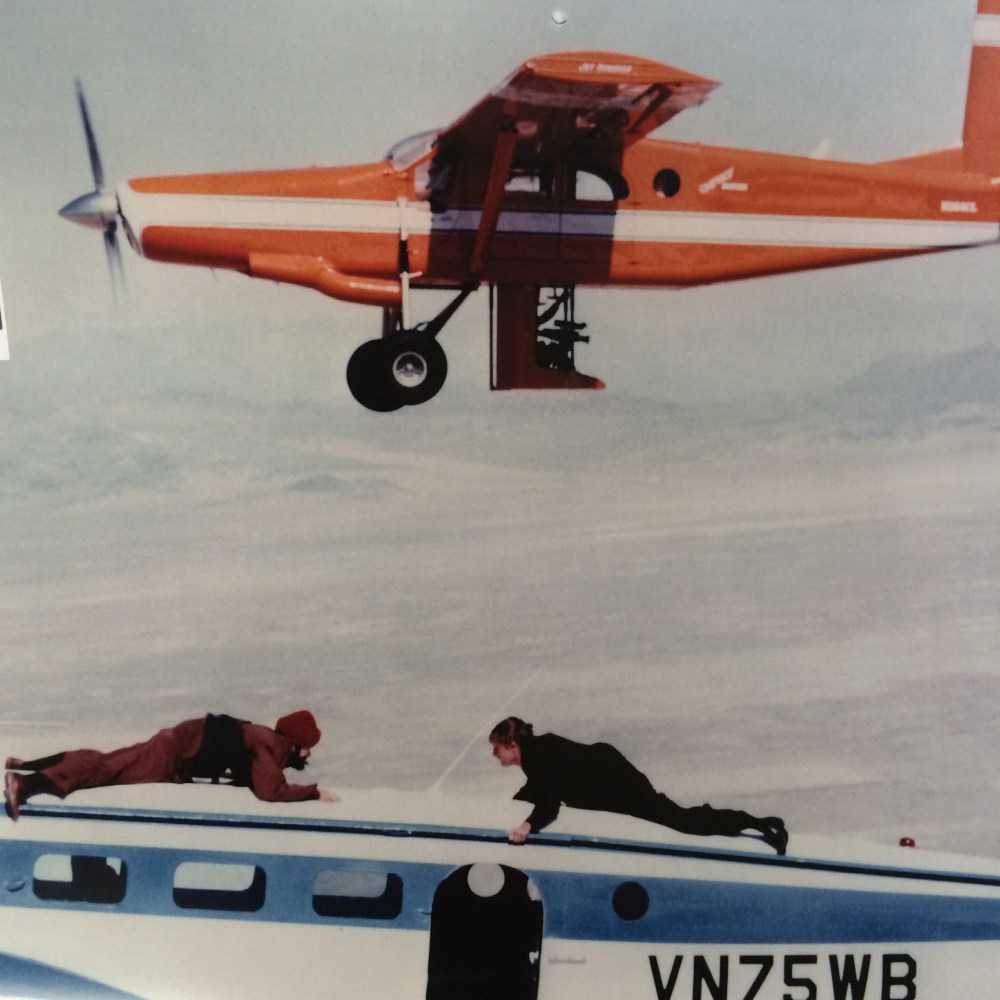
The Final Reckoning
Despite having competing movies in the theaters, Roger Moore and Sean Connery remained good friends. Throughout this period they never saw the head-to-head films as anything but fun, a good-natured rivalry, a friendly wager, and good sport. While producers were locked in vicious courtroom battles, and creative teams set out to bury the other production, Connery and Moore would frequently meet for dinner or drinks, and laugh about the whole thing.
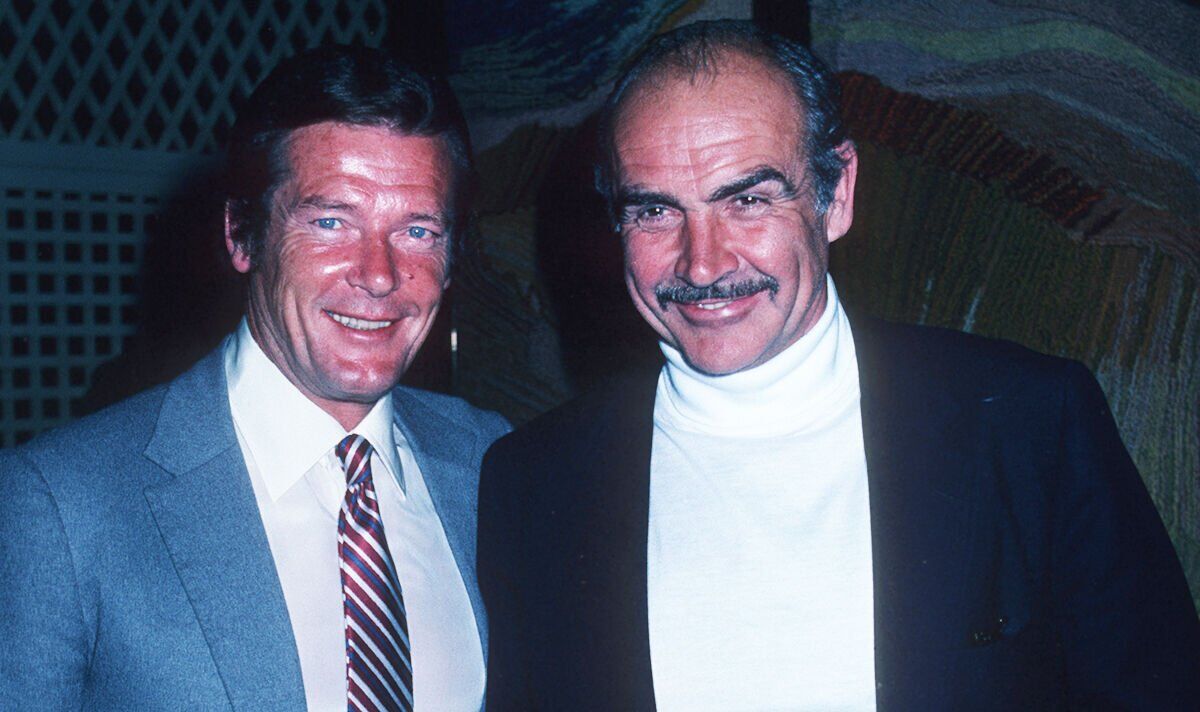
The press tried their best to manufacture a “Roger vs. Sean” feud, but neither Moore nor Connery spoke ill of the other during interviews for their respective films, and refused to be drawn into such games. Connery said:
“Roger plays it his way, I play it mine, I don’t want to make comparisons.”
Connery even suggested to Moore that they pose for a photo together and issue a joint press statement to squash the rumors of a rivalry. The marketing would similarly play into the so-called Battle Of The Bonds. The poster for Octopussy referred to it as “James Bond’s All Time High”, while Never Say Never Again’s poster would state “Sean Connery IS James Bond”.
Financially, Octopussy would also manage to come in at a final budget of $9 million less than Never Say Never Again. The difference a seasoned producer can make on a movie is illustrated perfectly by this difference.
Never Say Never Again would triumph with the critics, however, who scored it more favorably than Octopussy. The Roger Moore Bond outings had, by this point, become completely critic-proof. No matter how sniffily the critics reacted to them, audiences flocked to see them.
This happened again, and Octopussy outgrossed Never Say Never Again, with $182 million in 1983 dollars vs. $159 million. Victory to Eon.
Over the years, McClory attempted to launch other Thunderball remakes numerous times, including approaching Timothy Dalton about a return to the role during Pierce Brosnan’s time as Bond. Eon eventually regained some of these Bond rights in an out-of-court settlement with Sony that led to them being able to make Casino Royale. Then, when Kevin McClory died in 2006, his Bond rights were swiftly secured by Eon from his family, paving the way for Blofeld to return in Spectre.
Do You Expect Us To Talk?
Stark: Writing about two Bond films at once is exhausting! So how the hell are we going to handle this? Same criteria, we just evaluate two movies in each section? Compare and contrast?
Wrenage: Sure, why not? Might as well give Outposter’s their money’s worth!
Familiarity breeds contempt. I always considered Octopussy a weak Bond, as it’s probably the Bond movie I’ve seen the most. This is because a summer existed in the distant past where a certain movie channel basically ran three movies over and over: Beastmaster, Jaws III, and Octopussy. I’ve seen Octopussy so many times TV radiation branded its images into my skin. Yet, I have not revisited Octopussy in quite some time, and distance has lent a bit of perspective. Lo and behold, Octopussy has a decent amount of stuff to like.
Stark: I have a strange amount of affection for Jaws III. That is an article for another day…
I remember this time clearly, but obviously, I must have been way too young to remember any of the behind-the-scenes shenanigans and legal difficulties. I just remember being happy there were two Bond movies out in a year, and my parents talking about Connery being back.
I also (really weirdly) vividly remember the Octopussy stickers that came free in Shredded Wheat breakfast cereal. The crocodile one was on the inside of my friend’s wardrobe door. Funny how your memory recalls strange little facts like that.
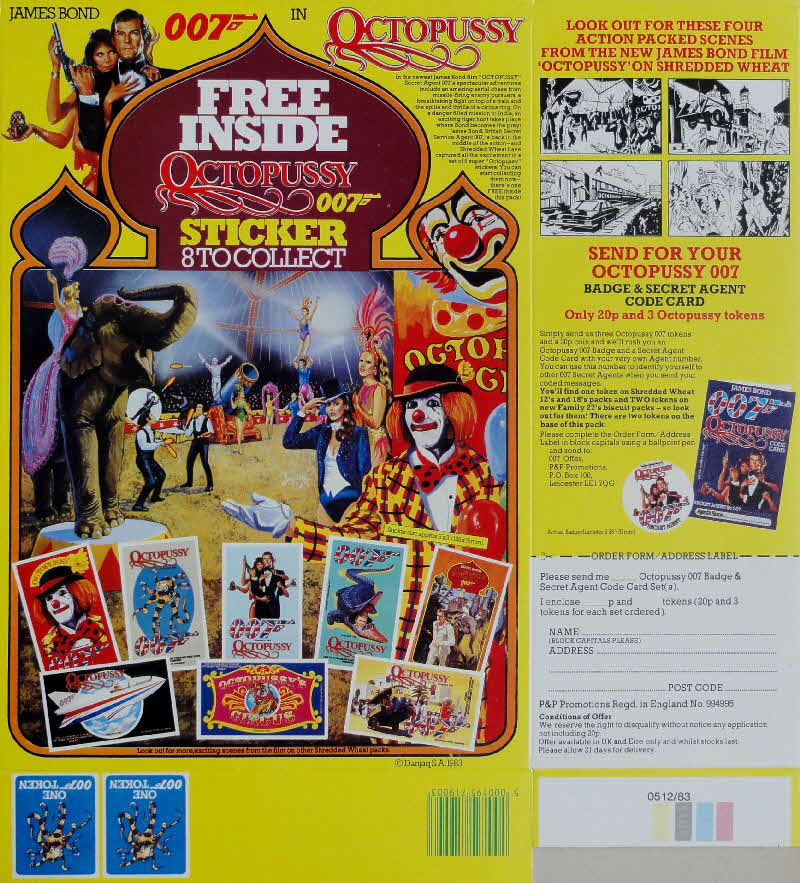
I maintain that if you look directly into the heart of Octopussy, there is a cracking Cold War thriller in there, wrapped in the style of Bond, with Moore basically now able to play the role in his sleep.
Wrenage: Never Say Never Again is also an interesting effort. One has to admire a person who has the vision to navigate legal loopholes to make an independent Bond film in direct competition with Eon. Schwartzman got Connery back. He put together a solid cast. He got a real director. Overall, his team somewhat captured the feel of a 1960s Bond, with updated Firefox-level effects.
All of the elements are there: action, exotic locales, gadgets, pre-title, SPECTRE, M, Q, femme fatales, fully-realized sets, etc. Yet, they all have a different spin due to another creative team’s interpretation. It makes for a mixture that invites examination.
Since Never Say Never Again is built on the Thunderball platform, the question arises: which is better? I like Thunderball, but I am not enamored with Thunderball. At the end of the day, Thunderball is superior, though. It simply has more style.
Stark: The style is the thing. Strip away some elements that, by now, were pure “Bond” and you are left with something that feels a bit empty. It’s simply “a Movie”. I am sure we will talk much more about this as we get into scoring.
Ranking And Rating
Let’s get to the ratings and rankings. Wrenage and Stark will give their opinions on the Bondian elements found in Octopussy and Never Say Never Again and come up with a score and ranking to place them appropriately in their league table of all things Bond.
Bond
Stark: This is tough. Moore’s Bond was, by now, its own thing and he inhabited the role like a comfortable pair of underpants. Despite being two years older than Connery, you also notice that Connery really looks his age, possibly more than Roger. But it’s goddamn Sean Connery!
Wrenage: Despite performing under the weight of some ill-advised humor, Moore does solid work in Octopussy. He gets to act humorous, grave, brave, romantic, and desperate and pulls all of them off.
Some great Bond moments occur in Octopussy. Bond’s preference for cash rather than a check at the Backgammon game is good stuff. His grave demeanor as he puzzles out Berkoff’s plot is nicely done. Moore’s eye blink at the name of Magda’s tattoo is meme-worthy. Decent Q interaction. Bond at the auction is superb. Great character work where he needles the villain while simultaneously having a plan in his back pocket in case things don’t go his way.
Too bad someone looped Tarzan’s yell in Moore’s mouth (or at least his stunt double’s mouth) and made him tell a tiger to “sit!”
Yet, Moore delivers other jokes just right.
“No, ma’am, I’m with the economy tour…”
Stark: It’s shit like that, up there with The Man With The Golden Gun swanny whistle and that fucking pigeon in Moonraker, that undermine Moore’s Bond again and again. They just take it too far. A little bit of restraint, or somebody saying “Enough!” was needed several times in Moore’s run. Connery is also leaning into the comedy, or seems to be in Never Say Never Again. A reaction to knowing he was up against Moore, and that 80s Bond was not 60s Bond?
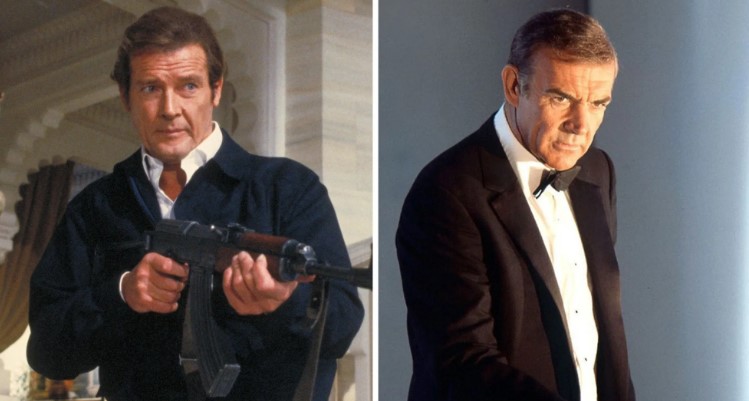
Wrenage: Despite that, it is good to see Connery back in the saddle. It gives him a chance to wash away the taste of Diamonds Are Forever. He has that old twinkle back in his eye. His quips flow naturally. He can still throw a great punch. Even though he is older, he clearly got in shape for the role and looks fitter than he did in You Only Live Twice and Diamonds Are Forever.
It is funny how the jokes about age play in this day and age. Connery was in his early fifties when he made Never Say Never Again. Now Hollywood keeps trotting out action stars who are so old they should really be serving in the senate rather than making movies.
Stark: These days, with diet and exercise and skincare regimes, 50 is the new 35. Back then you looked your damn age and grew old gracefully. Connery is 52 here, barely a decade older than, say, Chris Hemsworth or Chris Evans. To be fair to Ol’ Rog, who was older, he didn’t get a lot of time to get in shape for this, as Brolin was packed up and ready to roll.
Bond Girl
Wrenage: Broccoli must have really liked Maud to bring her back. I never really understood that decision. The behind-the-scenes make the circumstances a bit clearer, but it still mostly seems like Broccoli simply really liked Maud.
Octopussy is a good character, though. It is nice to see a Bond Girl who isn’t an operative or an expert in some field. Octopussy is a criminal, and while her girl army is a bit over-the-top, it makes a degree of sense. A circus that travels among different countries would be a reasonable way to smuggle things. Plus, this gives all of the girls a reason to be physically formidable. Acrobats are tough humans.
Special mention must also be made of Kristina Wayborn as Magda. She is more Barbie than Margot Robbie and a genuinely athletic woman. When she is seen throwing a grenade, you can tell she has a live arm. I imagine she was a solid softball player.
It is not as noticeable now because the feminine cinematic image has evolved another 40 years. Yet, in 1983, Wayborn popped off the screen whenever she was shown. She does have some weird lip action, though, very Sylvester Stallone-like.
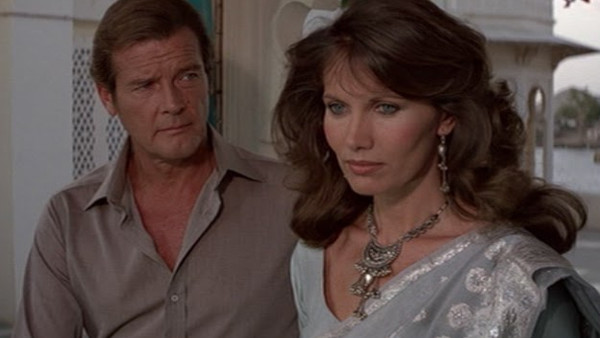
Stark: I like the more mature Bond girl used here. I think Moore and Brocolli knew that Moore couldn’t keep bedding girls young enough to be his daughter so it was a good decision, and Adams is a strikingly beautiful woman. Maybe this is just because I am also advancing in years now. Persis Khambatta (with hair) would have been interesting, but then she had just appeared in Megaforce…
Never Say Never Again is the first movie I remember seeing Kim Basinger in. Way before Batman and Cool World and all that. There is something of a vulnerability to her in this, which is endearing. Just like Domino in Thunderball with Fiona Volpe, she is destined to be forever overshadowed by the femme fatale.
Wrenage: Kim Basinger is a pretty face and not much more in Never Say Never Again. Her main character trait seems to be dancing. They really lean into Basinger’s ballet background in this film. The scenes where she dances probably outnumber the scenes where she doesn’t dance.
Stark: Not just dancing, a weird kind of jazz-funk fusion dancing to a soundtrack that has heavy porn music vibes! Still, I really liked the scene where Bond pushes Largo’s buttons with the kiss.
Wrenage: Barbara Carrera is the real female star of Never Say Never Again. She relishes every moment on camera as Fatima Blush. And, one has to admit, she pretty much nails it. I don’t even get the sense she is acting. It seems to be her real personality. She should get some recognition of the fact that she went toe-to-toe with Connery and stood up to him quite well without resorting to any stronk-woman posturing. Frankly, she leaves the movie too soon. Terrible outfit, though. It looks like she stole Sarah Douglas’s pants from Superman 2 and decided Saran Wrap would make a nice blouse…
Stark: This stuff doesn’t get talked about enough. No, not her outfit, but her character. She basically fucks Bond with the full intention of killing him as soon as they have finished up. Then she demands he signs a contract stating she was the best fuck of his life. If the roles were reversed, imagine the howls of “Toxic masculinity!” but here she’s just a damn fine, fun, female villain.
Villains
Stark: Three-way villain action in this movie. At first Octopussy is a villain, then you have Khan and Orlov. Gobinda, the knife throwers… this is all great fun. You simply can’t deny it.
Wrenage: Is Louis Jordan the most sophisticated of the Bond villains? Telly Savalas’s Blofeld was pretty sophisticated, too. Regardless, the sophistication is just a veneer. Jordan is a snake. He gets buy on being sneaking and charming rather than being an overt danger. He doesn’t really have a huge plan or greater ideology. He is simply a willing participant in whatever scheme gets him money. I appreciate that.
Stark: Yup. Quite refreshing that he doesn’t have a lair or a plan for global domination. He is just happy to take the Russian money, thumb the eye of the West, and disappear.
Wrenage: Kabir Bedi is no Oddjob or Jaws, but he gets the job done. He is just there to be a formidable presence that we know Bond will eventually have to face.
Meanwhile, I remember Berkhoff having a bigger role, but he really isn’t in the movie that much. When he is in view, Berkhoff makes the most of his screen time. You can tell he thrives on having a camera pointed at him and clearly loves pulling out his Russian accent.
Checkle-sla-VOKIA!
As for the knife-throwing twins, they are played by David and Anthony Meyer. I have never seen them in anything since. It looks like most of their work was in Shakespearean films. They make decent henchman, though. Octopussy really does have a full villain gallery.
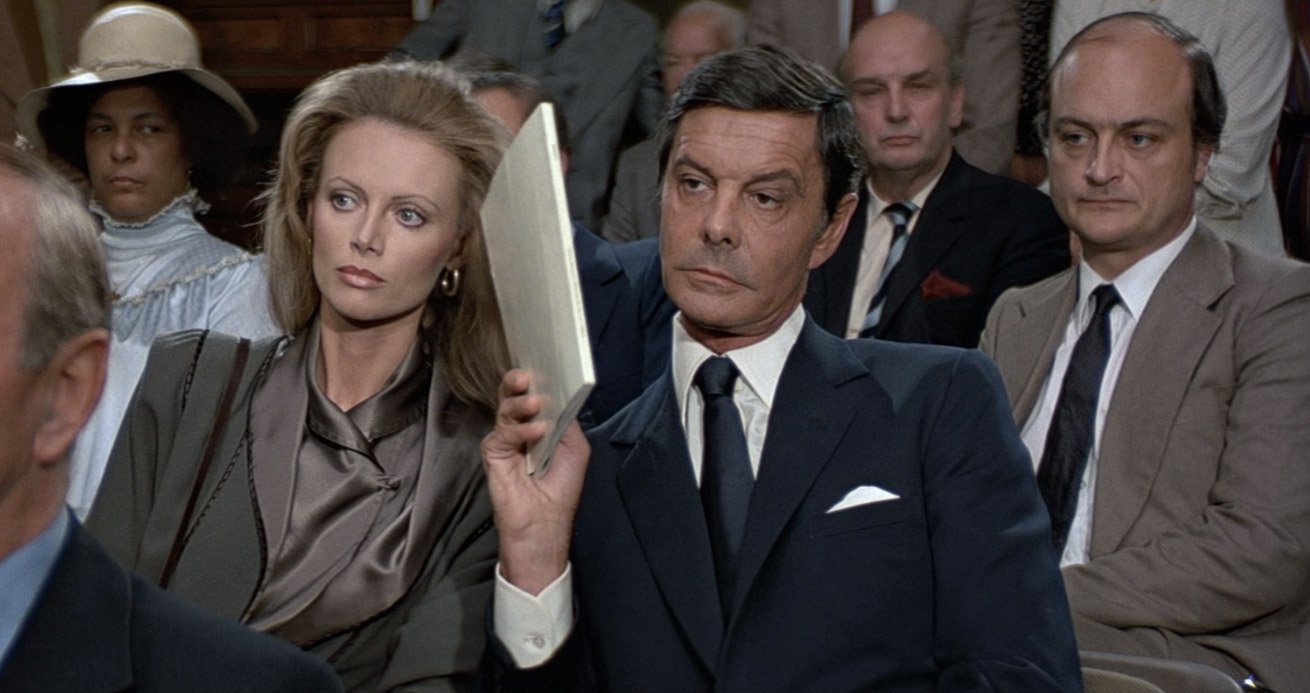
Stark: Berkhoff is at his scenery-chewing best in this. You can see the spittle fly as he goes off on a rant and you have to love it. He’s the swivel-eyed caricature of how we wanted to imagine they must be behind the Iron Curtain and he’s great in the role. I agree though, I would have liked to have seen more of him.
As far as Never Say Never Again goes, I really, really like Klaus Brandauer. He’s got these ticks and quirks that seem to make him frightening underneath. The way he carries himself, delivers his lines. He’s kinda mezmerising. You see it in the video game sequence as well. You know he’s a threat without being threatening.
Wrenage: Klaus Brandauer is quite the oddball in his interpretation of a Bond villain. He uses lots of nervous hand movements, pauses and facial expressions. Rather than simply being a menacing presence, he seems to have put some thought into the role. His Largo is as psycho as he is socially awkward. The viewer gets the sense Largo is brilliant but not smart enough to be human.
Max von Sydow also appears briefly as Blofeld. Like Carrera, it would have been nice to see a bit more of him. Considering what Eon did with Blofeld, it might have been better to leave the character out, though. This version of Blofeld is quite blah after the way the Eon films used the character.
Stark: Honorable mention to the Never Say Never Again version of Count Lippe. In this, he’s simply a murderous thug, and played by an old favorite of ours at the Outpost, Pat Roach.
Plot
Stark: As I said above, Octopussy is a cracking Cold War thriller wrapped up in the cloak of sheer style and sense of fun that is Bond.
Wrenage: Yes, upon thinking about it, the plot for Octopussy is fairly clever. A renegade Russian general uses a smuggler, who has a circus, to try to achieve a nuclear detonation on a military base. That gives you a fairly solid throughline to do many things with. Am I going to talk myself into liking this movie?
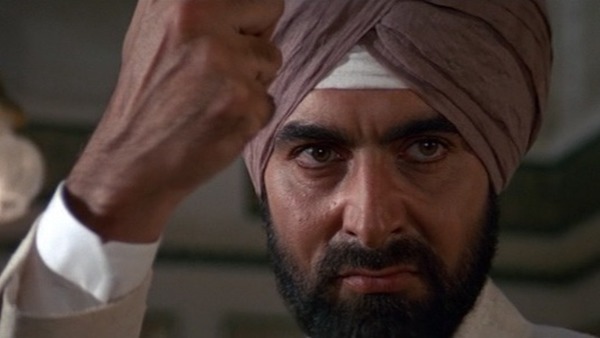
Stark: I think you are. We are right back at my unified Bond theory – Bond is like sex and pizza, even when it’s “bad” it’s still pretty good and you are glad you had it. This theory remains undefeated!
Wrenage: On the other side of the equation, the first act of Never Say Never Again flows quite well. It is fun to watch an aging Bond get back in the saddle and start picking up the threads of the plot. Once Bond goes to the Bahamas, things become a bit frayed. The characters start meandered a bit. Eventually, the plot seems to be more about moving a nuclear bomb than actually using a nuclear bomb.
Stark: I will keep my powder dry on this until we discuss X-Factor.
Wrenage: Some fun things happen within the plot, though. Video games started to blow up in 1983, and a whacky video game becomes a set piece that actually works pretty well. It’s was ahead of its time, really. The video game took rumble packs to the next level and helped build Largo’s character.
Stark: Strangely, that video game scene seems to work better now than it did in the 1980s and I cannot figure out why. Maybe because we now know that middle-aged men still play video games. Back then they simply didn’t.
Wrenage: Also, we don’t get sharks with freakin’ laser beams attached to their heads in Never Say Never Again, but we do get sharks with some sort of electronic devices attached to their dorsal fins. That’s something, at least…
Action Sequences
Wrenage: You can tell when Michael Wilson is heavily involved in a Bond film. He has a tendency to throw in everything, plus the kitchen sink. Octopussy has a fair amount of action. Most of it is pretty good. I greatly enjoy the train stuff. The auto-rickshaw chase is fun, but it also serves as a good example of the ill-advised humor. Imagine that sequence without the “get off my bed!” punchline. It would be so much better.
Stark: Also hilariously 1980s gentle racist. A lot of that stuff is straight up It Ain’t Half Hot Mum* levels of cringe about India and Indian culture, but we won’t get into judging the world of the past by today’s standards. This was all completely acceptable in the 1980s post-Colonial world.
(*It Ain’t Half Hot Mum is a 1970s British television sitcom about a Royal Artillery concert party based in Deolali in British India, and then the fictional village of Tin Min in Burma, during the final months of the Second World War.)
Wrenage: Some of the action gets a bit too cute at times, too. For example, in the car chase to the military base. Remy Juliene and his crew are great, but they make the police drivers look too skilled, more skilled than Bond, in fact.
Things also get wiggly in the finale. I’m not sure about the hot-air balloon and lady assault force. You can probably get by with the lady assault force, but the balloon is a bridge too far. Likewise, the plane sequence is a bit much. You can get away with outlandish action to a degree because Bond is hyperreality, but you can still overdo it. The plane sequence goes full retard with the handles specifically on the plane for Bond to grip and how he grounds the plane with ankle power.
Bond must do a lot of seated heel raises.
I do like Jordan’s order to Bedi to “go out and get Bond,” though. Good humor!
Stark: The hot air balloon is there simply as a call back to the parachute in The Spy Who Loved Me and, as you say, the main feeling is “Why?” The plane fight is classic upping of the Bond ante. You have had fights on top of a train before… now we are going to do one on top of a plane! A variation on this will therefore no doubt show up in Mission: Impossible 8 where they regularly copy from their Big Book of Bond.
I agree about Kahn telling Gobinda to “go and get him.” The look on Gobinda’s face! If only he had seen Austin Powers and understood about the fate of the henchman.
Wrenage: The fact that Gobinda actually went on top of the plane creates so many character questions. He goes beyond loyalty there. That sort of obedience borders on love. Perhaps, Khan once saved him from jackals or something?
Never Say Never Again, on the other hand, only contains two stand-out action sequences. The fight with Pat Roach is great. Roach was a fantastic heavy. He gets to use boxing, pure strength and a cable sword in the sequence. Plus, the fight ends with a gag that is perhaps a bit broad but still kind of funny.
Likewise, the motorcycle sequence is solid. They used a 1982 Yamaha XJ650 Turbo, and it plays well onscreen. It looks like a street bike, but they get some pretty agile stunts out of it. This scene comes into the movie with good energy, as well, since Bond isn’t on the bike just because it is time for an action scene. He is out to avenge the death of a fellow agent.
Never Say Never Again even features the Lewis Gilbert-esque scene of a shootout in a big location with lots of people. Okay, a shootout in a medium-sized location with a medium amount of people. All right, a shootout in a small location with a small amount of people…but the gist of the idea is there!
Stark: That, in nutshell, is where you start to really see the problems with Never Say Never Again…
Pre-Title Sequence
Stark: I get why the writers were absolutely incensed that the producers put the opening song over the intro sequence to Never Say Never Again. It’s a strange way to start a movie. As an experiment, watch this. Some enterprising young chap on the internet has given the opening to Never Say Never Again all the standard Bond flourishes and the difference is staggering:
Wrenage: The pre-title sequence of Never Say Never Again works well. It is basically a beefed-up variation of the From Russia With Love opening. You are right, the different music used in the video above makes a big difference. I agree with the screenwriters’ complaint, but I don’t notice the music a huge amount in the Never Say Never Again pre-title. Mostly, I enjoy seeing Connery again so much that I don’t pay attention to anything else.
I also really like the Octopussy pre-title. Bond on a mission is fun. He gets to do a disguise, gets captured, and the mini-jet chase looks great onscreen. The hanger explosion is also an incredible miniature. I never realized that was a miniature until recently. The way they glued on the panels individually makes it blow up real good.
Stark: Could have done without the comedy horses ass – again another example of when they didn’t quite get to reign it in. I do like any opening that shows Bond mid-mission. It is the way the Bond Gods intended a Bond movie to open. That woman in the Range Rover too… wowsers!
Theme Song
Stark: I had no time at all for Octopussy’s theme originally, but I kind of low-key love it now, for several reasons. Firstly, calling it All Time High is another marketing dig at the rival production. Then there is an excellent cover on the David Arnold James Bond Project album by Jarvis Cocker of Pulp, complete with full orchestra. Finally… that scene in Ted. You might say I never intended to do…
Wrenage: Octopussy is still in that same old, same old phase of Bond theme songs that started with The Spy Who Loved Me. All Time High is not great but oddly catchy. Once it gets in your head, it’s over. I don’t know how many times I found myself singing it after working on this article. This forces me to rate it higher than I think it deserves because, obviously, it works.
Meanwhile, John Barry returned for the soundtrack. He was not on For Your Eyes Only due to tax problems. You can tell Barry is back on Octopussy. Its score marries well with what is happening onscreen.
Stark: Bring me Barry and dial up that brass section! Every time.
Wrenage: Lani Hall sings the theme song for Never Say Never Again. It is a bit cutsie-poo. The music for the movie was written by Micahel Legrand after attempts to get James Horner and John Barry did not work out. For the most part, I can’t remember a single thing about the music in Never Say Never Again. All I remember is Lani crooning “Never…never…” over Connery’s wink to the camera at the end.
Stark: The soundtrack to Never Say Never Again is an 80s synthesizer jazz-funk nightmare, Wrenage. Let us speak of it no more. Oh… hang on… X-Factor is next. I feel we will be doomed to address it again.
X-Factor
Stark: This is a place where I think Never Say Never Again falls down badly. With all the usual accouterments Octopussy genuinely feels like a Bond film and Never Say Never Again, despite its locations and budget, never does. It feels like a very shiny TV movie. Same with the music. Without that signature, big and brassy Bond theme to punctuate proceedings, the score feels strangely… like a middle-of-the-road jazz album doomed to be played in an elevator.
Wrenage: There is not a lot of X-Factor for Octopussy either, but it has little things I enjoy: the yo-yo saw, sheep-eye eating, sliding down banisters and shooting off newel posts, wristwatches with TVs in them. The movie has all of the right stuff. You could probably edit a fully-great Bond movie out of this just by removing some of the groaner one-liners.
And was that Fin Fang Foom on the poster that Bond drives the rickshaw through?
Stark: I think it’s some Bollywood production?
Wrenage: As for Never Say Never Again, an independent Bond film with Connery is a solid X-Factor, in my book.
We also got Bernie Casey as a black Felix Leiter. I remember no controversy about this decision. Back in 1983. Mr. T, Michael Jackson, and Eddie Murphy absolutely dominated pop culture. Plus, Michael Jordan hadn’t even entered the arena yet. Black characters were super popular.
Stark: We have to consider that maybe NWA ruined things for everyone.
I think we go in different directions on this one. Once you get over the “Hey look, it’s Sean-fucking-Connery back as Bond!” moments in Never Say Never Again, and outside the villain and femme fatale, you have a strangely empty, low-quality feeling movie. As I said, it’s like a TV movie adaption of Thunderball that Connery has somehow wandered into. No gun barrel, no Barry-brass, no style. Octopussy is most very definitely a 1980s Bond movie. Simply by existing as an Eon Bond, it has X-Factor that Never Say Never Again can’t quite achieve.
Wrenage: As a random aside, which I often have, Gavan O’Herlihy had a good 1983. He appeared in a Never Say Never Again and Superman III. Talk about scoring some major franchise appearances. I didn’t realize Gavan was the son of the great Dan O’Herlihy. Dan also put together a good run in this general timeframe: Halloween III, The Last Starfighter, Robocop…
Scoring Breakdown – Octopussy
| Stark | Wrenage | |
| Bond | 6 | 8 |
| Bond Girl | 6 | 6 |
| Villain | 6 | 6 |
| Plot | 7 | 8 |
| Action Sequences | 6 | 7 |
| Pre-Title Sequence | 7 | 8 |
| Theme Song | 6 | 6 |
| X-Factor | 6 | 3 |
| TOTAL | 50 | 52 |
Stark: Should we even rank Never Say Never Again? It’s not real Bond. It could lead to contamination. If we go down this path, then next thing you know we are watching the 1960s Casino Royale and then I am afraid I will have to call the movie police.
Wrenage: If you had to pick one as better than the other, which way would you go? I’d take Octopussy.
Stark: Definitely Octopussy. Never Say Never Again is a curiosity. An interesting one, but still a curiosity. I guess you could almost say it is a sweet distraction, for an hour or two…
OK, just for shits and giggles, let’s do this!
Scoring Breakdown – Never Say Never Again
| Stark | Wrenage | |
| Bond | 7 | 7 |
| Bond Girl | 5 | 6 |
| Villain | 7 | 6 |
| Plot | 4 | 4 |
| Action Sequences | 4 | 4 |
| Pre-Title Sequence | 5 | 6 |
| Theme Song | 4 | 3 |
| X-Factor | 4 | 5 |
| TOTAL | 40 | 41 |
Stark: I gave Bond a bonus point because it is Sean-fucking-Connery. It loses plot points for simply being a remake of Thunderball and not really doing anything excitingly new with it. The rest.. well…
Wrenage: It boggles my mind to learn that McClory tried to make Thunderball yet again with Dalton during Brosnan’s run. One kind of admires his persistence, even as one kind of thinks, let it go, buddy. But I suppose where there is money to ring out of gray-area legal rights, there are always carpetbaggers skulking.
Stark: He just wouldn’t let it lie. He just wanted the remake Thunderball over and over and over and over…
Overall Rankings
Last time For Your Eyes Only pushed The Man With The Golden Gun down a tier. What will Octopussy do this time around? And hypothetically where would Never Say Never Again fit in, if we were dirty turncoats?
First Tier:
From Russia With Love (61.5)
On Her Majesty’s Secret Service (61)
The Spy Who Loved Me (59.5)
Goldfinger (54.5)
Thunderball (53.1)
Second Tier:
Live and Let Die (53)
You Only Live Twice (51.5)
For Your Eyes Only (51.5)
Octopussy (51)
Dr. No (49.5)
Third Tier:
Moonraker (48.5)
Never Say Never Again (40.5)
The Man With The Golden Gun (38.5)
Diamonds Are Forever (34.5)
Fourth Tier:
(Empty)
That’s A Wrap
Stark: I am still dumbfounded over Dr. No. I am not sure I will ever be able to get over that. I am not too surprised where Octopussy comes in. It may not be too fondly remembered, but there is a lot to like about it that stands out on a rewatch.
Wrenage: Ooph-dah! as we say in Minnesota. That was a long one! Standard Bond-On articles are going to feel like a walk in the park after doing a double-bill. I was surprised to see Octopussy come in higher than Moonraker. At the same time, I find this run of Moore movies hard to separate from each other. Eon and Moore had their formula down during this time-period and consistently delivered. Likewise, I was surprised to see Never Say Never Again score higher than The Man With The Golden Gun. Truly, that slide-whistle is unforgiveable…
Stark: That slide whistle ruins something that remains, to this day, the holy grail of stunts for car stunt drivers. They still talk about it in hushed tones. See what I mean about nobody saying “Enough!” during a lot of Moore’s run?
Wrenage: Hey, remember when I said Maud Adams’s cheekbones and jaw looks like the Predator mask?
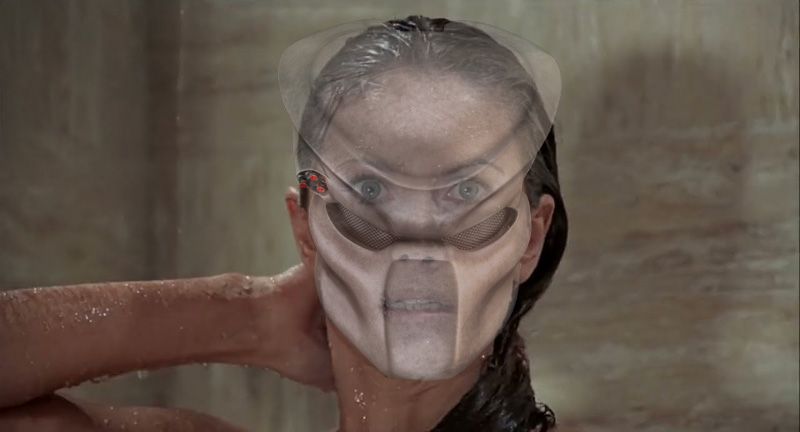
Stark: The woman is a goddess, and now you have ruined it. Thanks a lot!
NEXT TIME… An era ends. Break out the tissues. It is A View To A Kill.
Meanwhile, check out the rest of our Bond On series as we take a walk through all the Bond movies in order: Dr. No, From Russia With Love, Goldfinger, Thunderball, You Only Live Twice, On Her Majesty’s Secret Service, Diamonds Are Forever, Live And Let Die, The Man With The Golden Gun, The Spy Who Loved Me, Moonraker and For Your Eyes Only.
Check back every day for movie news and reviews at the Last Movie Outpost


